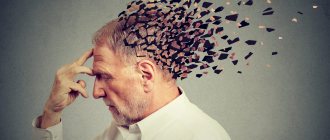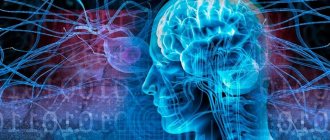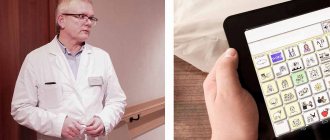A microstroke is a serious disease that results in the death of brain tissue resulting from a blood clot or sudden spasm of small vessels. In essence, the disorder involves a type of ordinary stroke. The difference is the damage to small capillaries. And due to the fact that a small area of the brain is affected, a person recovers faster.
Brief description of the disease
Acute damage to the cerebral circulation can take place in the form of a transient ischemic attack, microstroke or stroke. The latter can be recognized when neurological symptoms last for more than a day. In the case of a transient change in blood circulation in the brain, as in the presence of a microstroke, the signs of the disease disappear within 24 hours. In addition, no morphological abnormalities of the brain are noted. With a microstroke, foci of necrosis of the brain substance appear.
Signs of the disease in men and women are not at all different. They do not manifest themselves clearly, as with hemorrhagic and ischemic stroke. Often people suffer pathology on their legs and are not aware of it, which is dangerous for a person, since the risk of developing a full-fledged stroke in the near future increases.
Previously, microstroke was observed in old age, in women at 75-80 years old, in men - 65-70 years old, and currently the disease is observed in the younger population - 50-55 years old. Fortunately, the disease occurs extremely rarely in children; it can appear in a premature baby.
Diagnostics
Modern diagnosis of a microstroke in a man involves a set of procedures that will reveal whether an attack has occurred, as well as establish the localization of the focus of necrosis.
Prehospital diagnostics
The prehospital stage is based on medical history and neurological examination. It is extremely important for the patient not to waste time and make an appointment, since the most significant manifestations disappear within 24 hours.
Instrumental diagnostics
The most popular and effective device for detecting acute cerebrovascular accident is a tomograph. It can be used to perform magnetic resonance imaging and computed tomography.
Such studies analyze the current state of the brain and identify dead areas in it. In addition, an angiography procedure is performed using tomography. A special contrast agent is injected into the circulatory system of the subject, thanks to which the entire vascular network will be visible in the image. In this way, you can see the location of all the vessels and find out whether they contain cholesterol plaques that form plugs.
Differential diagnosis of various types of stroke
Prehospital and instrumental methods allow for differential diagnosis of different types of stroke. Most often we are talking about ischemic and hemorrhagic types. Each of them requires its own approach.
Specialists at the Yusupov Hospital carry out all the necessary tests and studies to determine what type of disease the patient is facing. When making a diagnosis, it is imperative to pay attention to both visual signs and test results. In particular, retinal hemorrhage may indicate an ischemic stroke. However, specialists do not limit themselves only to external manifestations, but carry out a full examination of the cardiovascular system. The patient is also sent for magnetic resonance and computed tomography procedures, radiography and other studies that allow an accurate diagnosis to be made and the development of a therapeutic plan to begin.
The first signs and general symptoms of a microstroke
It is important to listen to your body, because the manifestations of a stroke warn a person that a circulatory disorder in the brain will soon occur. The initial signs and symptoms of stroke and micro-stroke in women are as follows; they should not be ignored:
- increasing headache;
- severe malaise, dizziness;
- nausea;
- blurred vision;
- hot flashes;
- sudden loss of coordination;
- loss of sensation or numbness of any part of the face or legs, arms;
- goosebumps;
- increased sweating.
Many people, even when feeling unwell, do not rush to see a doctor. When 1 small artery is affected, the clinical signs may be limited to the list of symptoms described above. If several small vessels are added to ischemia, the manifestations of the pathological course will begin to progress and will have a more pronounced color.
Coronary heart disease is damage to the myocardium (heart muscle), the causes of which are associated with impaired blood supply to the myocardium with arterial blood. Read more in the article: “how to cure cardiac ischemia.”
The main symptoms of a microstroke:
- increased headache, which may lead to vomiting;
- noise in ears;
- numbness of the limbs and part of the face, the side opposite the lobe of the brain where the ischemia occurred is damaged;
- drowsiness, general malaise;
- speech impairment, the patient has difficulty pronouncing words;
- a sharp increase in blood pressure;
- seeing double, it is difficult for a person to concentrate;
- increased sensitivity to bright light and noise;
- the eyeballs spontaneously move left and right;
- paleness of the skin;
- gait disturbance, inability to maintain balance;
- difficulty swallowing food.
Signs of a microstroke completely disappear after a few hours. If the clinical picture persists for more than a day, then this is without a doubt a stroke.
Nitroxoline, Furadonin and Furagin are uroseptic medications intended for the treatment of cystitis. Medicines effectively eliminate pain, burning, and cramps when urinating. Read more in the article: “What is the best medicine for cystitis?”
Symptoms of a microstroke according to its concentration
A microstroke causes certain symptoms, depending on the area where it is located. In relation to this factor, there are:
- damage to the anterior cerebral artery - motor functions are primarily affected - speech, facial expressions, since partial paralysis of the tongue and facial area occurs;
- violation of the middle cerebral artery - the main difference is a change in movements on one side of the body; when a microstroke occurs, they are insignificantly expressed, spreading only to the face, and occasionally to the hands and fingers; susceptibility on the side opposite to the damaged lobe of the brain is noticeably reduced;
- violation of the posterior artery - visual function is affected; Hallucinations and blurred vision are possible.
These signs are weakly expressed. According to statistics, 60% of patients who have suffered a mini-stroke will soon develop an ischemic attack.
It is important to promptly prevent dangerous vascular accidents.
The main cause of microstroke is considered to be hypertensive pathology and atherosclerosis. It is these diseases that cannot be left to chance.
Tests and diagnostics
All patients with transient ischemic attack should be examined within 24 hours of the onset of neurological symptoms. Since there is no brain damage in a microstroke, computed tomography or magnetic resonance imaging will not help diagnose this disease, but they are performed to rule out a stroke.
- Magnetic resonance imaging in a diffusion-weighted mode provides accurate and early diagnosis of ischemic brain damage. Diffusion-weighted magnetic resonance imaging is based on the study of the diffusion of water molecules in normal and altered tissues.
- For diagnosing microstrokes, a more informative research method is duplex ultrasound examination of intracranial vessels and neck vessels. This allows us to identify the presence of occlusion and its degree. Ultrasound and Doppler studies are of less value in assessing vertebral arteries where occlusion cannot be corrected.
- If damage to the vertebral arteries is suspected, angiography - a contrast agent is injected into the artery and pictures of the head and neck are taken. CT angiography examines the condition of the arteries of the neck and large branches of cerebral vessels.
- In addition to CT angiography, perfusion computed tomography after intravenous administration of a contrast agent is performed to study cerebral blood flow at the capillary level.
- a cardioembolic microstroke is suspected, echocardiography is performed, which allows identifying cardiac pathology.
- For differential diagnosis with an epileptic attack, electroencephalography is performed.
- Clinical and biochemical blood test (coagulogram).
- Blood sugar test.
- Lipidogram.
How to recognize a microstroke?
A disease contracted on the legs can lead to serious consequences. Although a person will quickly rehabilitate after it, however, professional therapy will still be needed. In order to begin appropriate measures in time, you should know the symptoms of an attack.
Signs of stroke and micro-stroke in women and men can be recognized by performing a simple test:
- try to smile - with necrosis of brain tissue, the lips are curved, one side of the face will not be able to move;
- close your eyes - one eye will not close completely, it will be slightly open;
- stick out your tongue - the tip will turn in some direction;
- test for coordination of movement - close your eyelids, stretch out your arms and try to hold them in front of you, one limb bends down; and if you try to raise both hands, one will still not have time;
- testing for clarity of speech - a person has difficulty pronouncing complex words and repeating long phrases.
If after performing the test a microstroke is detected, you should immediately call an ambulance. If left untreated, the patient's condition may worsen. Proper treatment will prevent adverse consequences.
Who is at risk?
Microstroke is not only a disease of older people; cases of the disease developing after 30 years have become more frequent. Starting from the age of 60, the probability of pathology doubles, since metabolic processes are inhibited, blood vessels function weaker, arteries become smaller in size, and plaques block blood flow.
The risk group includes people whose blood vessels are already damaged due to some disease or condition:
- atherosclerosis;
- diabetes mellitus, which thins the arterial walls;
- increased blood pressure;
- hereditary pathologies (Fabry), which reduce the size of blood vessels;
- excessive physical activity;
- congenital vascular disorders;
- vegetative-vascular dystonia;
- excess body weight;
- use of medications (contraceptives) that increase the risk of thrombosis;
- arrhythmias, previous heart attack and other cardiovascular diseases;
- abuse of bad habits (smoking, drinking alcohol) that cause spasm of the arteries;
- varicose veins of the lower extremities;
- after heart surgery.
The risk group includes workaholics. Women aged 18-40 years are more likely to have a mini-stroke than men. And having crossed the 60-year mark, the chance of developing the disease is equal. In addition, the former suffer the disease much more difficult.
Prevention
Prevention of transient ischemic attacks is:
- Following a diet with limited intake of salt and animal fats.
- Active lifestyle (moderate physical activity, swimming, walking, exercise, cycling).
- Normalization of weight.
- Stop drinking alcohol.
- To give up smoking.
- Regular examination and treatment in the presence of pathologies that are risk factors for transient ischemia and stroke ( atherosclerosis , diabetes , hypertension ).
Women with risk factors ( hypertension , obesity , dyslipidemia , migraine ) are not recommended to use high-dose estrogen contraceptives. Patients who have suffered a transient ischemic attack should constantly take antiplatelet, antihypertensive drugs and statins, the use of which reduces the risk of stroke by 30%. If there are indications, it is not recommended to refuse surgical treatment - carotid endarterectomy , stenting or angioplasty .
Consequences of a mini-stroke
A microstroke entails a more dangerous disease - a stroke. The first signs become a “bell” for a person to take all necessary actions to normalize the blood supply to the brain. In addition, micro-symptoms prepare the body, and then a stroke is tolerated much easier than an ischemic stroke that occurs against the background of a healthy person.
Statistics say that a mini-stroke will certainly be followed by an ischemic stroke:
- 2 days after the initial signs of a nervous system disorder have disappeared, a stroke occurs in every 10 people;
- every 5 TIA survivors are admitted to the clinic with a stroke within 1 year;
- 10% of patients suffer an acute disorder of the blood supply to the brain within 3 months;
- In people who do not have a brain stroke after a year of symptoms, a stroke occurs in 10-12% of cases within 5 years.
In addition to ischemic stroke, which occurs in 50% of patients after a transient attack, a complication of tissue necrosis can be absent-mindedness, secondary microstroke, depression, decreased memory and intelligence.
Consequences
If you consult a doctor in a timely manner and follow all instructions, the negative consequences are minimized.
At the same time, if you suffer an acute cerebrovascular accident on your legs, you may experience a series of repeated attacks within a short time. In the worst case scenario, ignoring symptoms threatens the further development of a major stroke. With the most unfavorable prognosis, it is fraught with a decrease in the quality of life and pathological changes in the functioning of consciousness.
Diagnosis of the disease
The diagnosis is made using MRI. Only through this high-tech method will it be possible to identify microdamage to the arteries of the brain. The main thing is to implement it as early as possible after the onset of the pathological process.
Other methods for detecting microstroke are:
- PET (positron emission tomography) - the procedure determines the cerebral blood supply to each area of the brain, reveals the level of vascular ischemia, as well as signs of resumption of blood supply; the only drawback of the study is the high cost;
- CT - imaging is performed by x-rays.
In addition to a tomographic examination, the brain vessels are carefully examined for the presence of atherosclerotic plaques and blood clots. If they are present, surgery can be performed, which is the best preventative measure for stroke. The list of necessary studies includes diagnostics of the veins of the lower extremities, the heart, and a blood test.
Pathogenesis
The key point in the pathogenesis of this condition is reversible cerebral ischemia, which occurs when there is a mismatch between the needs of the brain and the currently existing blood supply. Local anemia of brain tissue develops when perfusion decreases below 18-22 ml of blood per 100 g/min.
A transient drop in blood flow, due to various reasons, causes the development of ischemia in the brain tissue and is accompanied by reversible focal symptoms. The main pathogenetic mechanisms for the development of transient disorders are: microembolism ; hypotonic and hypertensive crisis , pathological tortuosity of the main vessels of the brain, as well as disorders of the anticoagulation system of the blood.
The outcome of ischemic cerebral circulatory disorders is determined by the caliber of the artery, the rate of development of blockage, localization, and the development of collateral circulation. If cerebral perfusion is restored, regression of symptoms is observed and the episode of transient ischemic attack ends. In the event of a further drop in blood supply to 8-10 ml per 100 g/min, which causes irreversible changes in brain tissue, cerebral infarction ( ischemic stroke ) develops.
First aid
The patient who has a mini-stroke remains conscious. Intense headaches should not be treated with pills. If there is no one nearby, then you need to try to call an ambulance yourself.
Before the arrival of doctors, you need to carry out the following algorithm of actions:
- put the patient to bed;
- put a pillow under your head (the head must be higher than your body);
- let fresh air into the room by opening the window;
- talk calmly with the patient, trying to distract him so that he does not think about the pain;
- unfasten the collar and belt, no clothing should squeeze the body;
- It is important to remain still, even if you feel better, since changes can be deceptive or temporary.
Before the medical examination, it is prohibited to give the victim any medications. It is quite difficult to independently detect micro-stroke at home or distinguish them from other cerebral disorders. Improper use of medications often causes dangerous consequences.
Treatment of brain tissue necrosis
A detected microstroke should be treated. The main task is to restore the disordered blood supply and normalize metabolic processes in the area of damage. With acute signs of stroke and micro-stroke, men and women are urgently taken to a medical facility. A full examination is carried out only in a hospital. Follow-up therapy is possible on an outpatient basis.
Table with effective drugs:
| Medicines | Their actions |
| Antiplatelet agents (Aspirin, Clopidogrel) | Normalize blood flow in the affected area. |
| Antiemetics (Metoclopramide) | They relieve a person from the urge to vomit. |
| Nootropics (Cerebrolysin, Pantogam) | Restores brain stimulation. |
| Antihypertensives (Nicardipine, Captopril) | They lower blood pressure; people with hypertension have to use them throughout their lives. |
| Lipid-lowering (Pravastatin, Lovastatin) | Reduce blood cholesterol levels. |
| Vasoactive (Curantil, Vinpocetine) | They have an immunomodulatory and angioprotective effect. |
| NSAIDs (Diclofenac, Ibuprofen) | Relieves headaches. |
| Thrombolytics (Urokinase, Actilyse, Tenecteplase) | Used for pathologies associated with arterial and venous thrombus formation. |
Treatment with neuroprotectors occurs after the acute symptoms of a microstroke have resolved. The drugs improve the patient’s well-being, help relieve asthenic syndrome, and restore memory. During the rehabilitation period, the person is prohibited from physical activity.
After treatment, drug therapy continues; patients with microstroke are often prescribed Aspirin Cardio for the rest of their days.
During rehabilitation, physiotherapeutic measures are carried out (electrophoresis, massage, the use of therapeutic baths, electrosleep), and gymnastics is effective.
Treatment of microstroke in men
Treatment of microstroke in men is carried out mainly by neurologists. The basis of therapy consists of several groups of drugs:
- Vasodilators help restore and enhance blood supply, including to the injured area of the brain.
- Nootropics improve cognitive abilities. They are used to stimulate mental activity and improve memory, which may have been damaged due to an attack.
- Antiplatelet agents are prescribed if there is a risk of thrombosis. These drugs prevent platelets from sticking together and attaching to arterial walls.
- Angioprotectors have a positive effect on the entire vascular bed and improve metabolic processes in them. These drugs are prescribed to almost all patients.
The therapy is also complemented by physiotherapeutic procedures. Men are prescribed various types of massage and given recommendations for physical therapy.
Preventive actions
To understand why you get headaches so often, you should see a doctor for an examination. Timely treated atherosclerosis and hypertensive pathology will prevent micro-stroke and stroke in the future.
Prevention recommendations:
- control blood pressure (if sharp jumps are often observed, the greater the risk of stroke);
- do not overeat, watch your weight;
- avoid stress and anxiety;
- women should not use oral contraceptives;
- spend more time outdoors;
- sleep should be complete;
- eat healthy and balanced (eat fruits, vegetables, seafood);
- eliminate bad habits.
Sometimes, to prevent the development of a recurrent microstroke, surgery is necessary (microbypass surgery, prosthetics, stenting). Their goal is to eliminate diseases of the blood vessels supplying the brain. The intervention is performed according to the strictest indications.
A patient who has suffered a mini-stroke has obvious health problems, and he must understand this. Therefore, it is dangerous to ignore the first signs; you need to establish the cause of the violation and make every effort to eliminate it.






